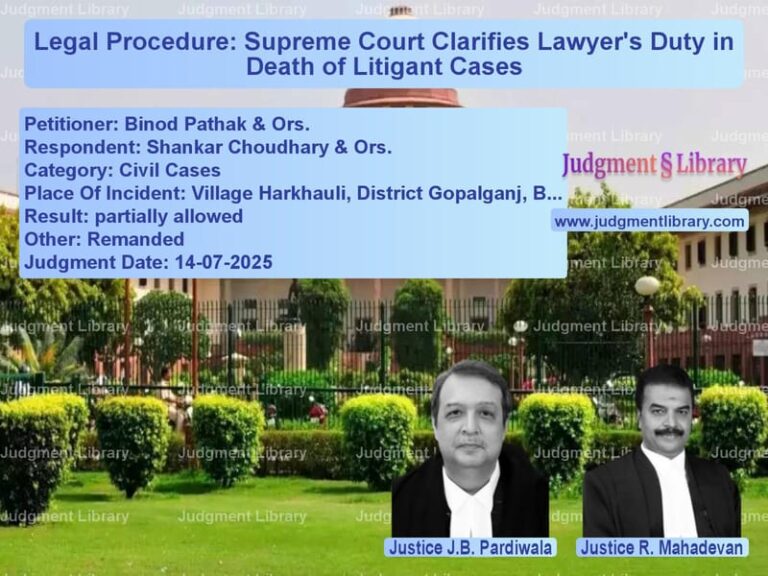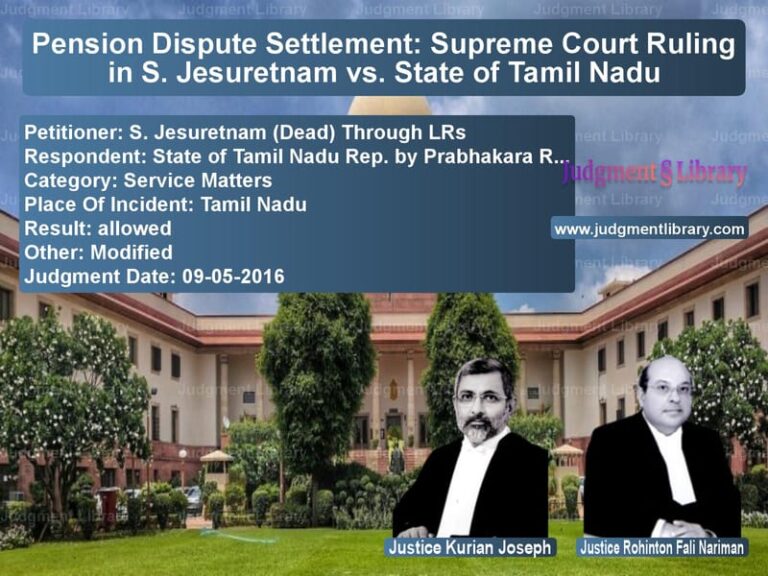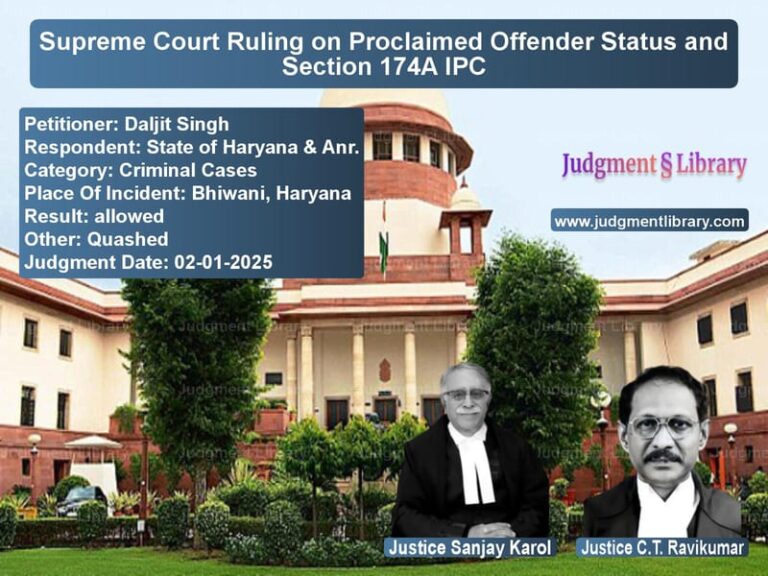Supreme Court Overturns ₹10 Crore Environmental Fine on Educational Institution
The case of State of Uttar Pradesh vs. Anand Engineering College revolved around an environmental dispute concerning the alleged discharge of effluents from a college into the National Chambal Sanctuary, leading to a ₹10 crore penalty imposed by the Forest Department of Uttar Pradesh. The Supreme Court examined whether the penalty was legally valid and whether due process was followed before imposing such a heavy fine.
Background of the Case
The dispute arose when the Forest Department of Uttar Pradesh alleged that Anand Engineering College, located on the Agra-Mathura Road near the National Chambal Sanctuary, was discharging effluents into the protected area. The Department claimed that the pollution caused by the institution posed a serious threat to the wildlife and ecosystem of the sanctuary.
The key events leading to the Supreme Court ruling were:
- The Forest Department had issued multiple notices to the college since 2003 regarding the alleged environmental damage.
- Despite these notices, the Department claimed that the college continued discharging effluents into the sanctuary.
- On 30.12.2011, the Forest Department imposed a fine of ₹10 crore on the college under Section 33 of the Wildlife (Protection) Act, 1972.
- The college challenged the fine in the Allahabad High Court, arguing that it was imposed without due process.
- The High Court ruled in favor of the college, setting aside the ₹10 crore penalty.
- The State of Uttar Pradesh appealed to the Supreme Court, challenging the High Court’s decision.
Arguments by the Petitioner (State of Uttar Pradesh)
- The college had been polluting the National Chambal Sanctuary for years, despite repeated warnings.
- The penalty was justified under Section 33 of the Wildlife (Protection) Act, 1972, which gives the Forest Department broad powers to protect wildlife and its habitat.
- The Forest Department had the authority to impose such a fine as a deterrent against environmental violations.
- Repeated breaches by the college necessitated strong action to protect the sanctuary’s ecosystem.
Arguments by the Respondent (Anand Engineering College)
- The ₹10 crore fine was imposed without issuing a show cause notice, violating the principles of natural justice.
- The Wildlife (Protection) Act, 1972 does not grant the Forest Department the power to impose monetary penalties.
- The fine was excessive and arbitrary, lacking any scientific assessment of environmental damage.
- The authorities should have initiated legal proceedings in a competent forum instead of directly imposing a penalty.
Supreme Court’s Observations
A Supreme Court bench comprising M.R. Shah and B.V. Nagarathna analyzed the case and noted several legal and procedural flaws:
- The penalty of ₹10 crore was imposed without any notice or opportunity for the college to present its defense.
- There was no record of any hearing or detailed assessment of environmental damage.
- Under Section 33 of the Wildlife (Protection) Act, the Forest Department has the authority to regulate activities in sanctuaries, but it cannot impose fines unilaterally.
- Monetary penalties must be imposed through a legal process in a competent court or tribunal, ensuring due process.
The Court ruled:
“The penalty of ₹10 crore was imposed in gross violation of the principles of natural justice. Nothing is on record to indicate that before imposing damages, any show cause notice was issued upon the original writ petitioners to show cause as to why the damages may not be imposed.”
Furthermore, the Court clarified that:
- The Forest Department has the power to take action against entities violating environmental laws.
- Instead of imposing fines, the Department could seek legal recourse through environmental tribunals.
- Closure of institutions violating environmental norms is an option, but it must follow due process.
Final Judgment
The Supreme Court upheld the High Court’s decision and set aside the ₹10 crore fine, ruling that it was imposed without proper legal authority and in violation of due process. However, the Court allowed the Forest Department to take appropriate legal action against the college if further environmental violations were found.
The ruling reinforces the importance of procedural fairness in environmental enforcement and sets a precedent for authorities to follow due process while dealing with environmental violations.
Petitioner Name: State of Uttar Pradesh.Respondent Name: Anand Engineering College.Judgment By: Justice M.R. Shah, Justice B.V. Nagarathna.Place Of Incident: Agra-Mathura Road, Uttar Pradesh.Judgment Date: 11-07-2022.
Don’t miss out on the full details! Download the complete judgment in PDF format below and gain valuable insights instantly!
Download Judgment: state-of-uttar-prade-vs-anand-engineering-co-supreme-court-of-india-judgment-dated-11-07-2022.pdf
Directly Download Judgment: Directly download this Judgment
See all petitions in Environmental Cases
See all petitions in Judgment by Mukeshkumar Rasikbhai Shah
See all petitions in Judgment by B.V. Nagarathna
See all petitions in dismissed
See all petitions in Quashed
See all petitions in supreme court of India judgments July 2022
See all petitions in 2022 judgments
See all posts in Environmental Cases Category
See all allowed petitions in Environmental Cases Category
See all Dismissed petitions in Environmental Cases Category
See all partially allowed petitions in Environmental Cases Category







